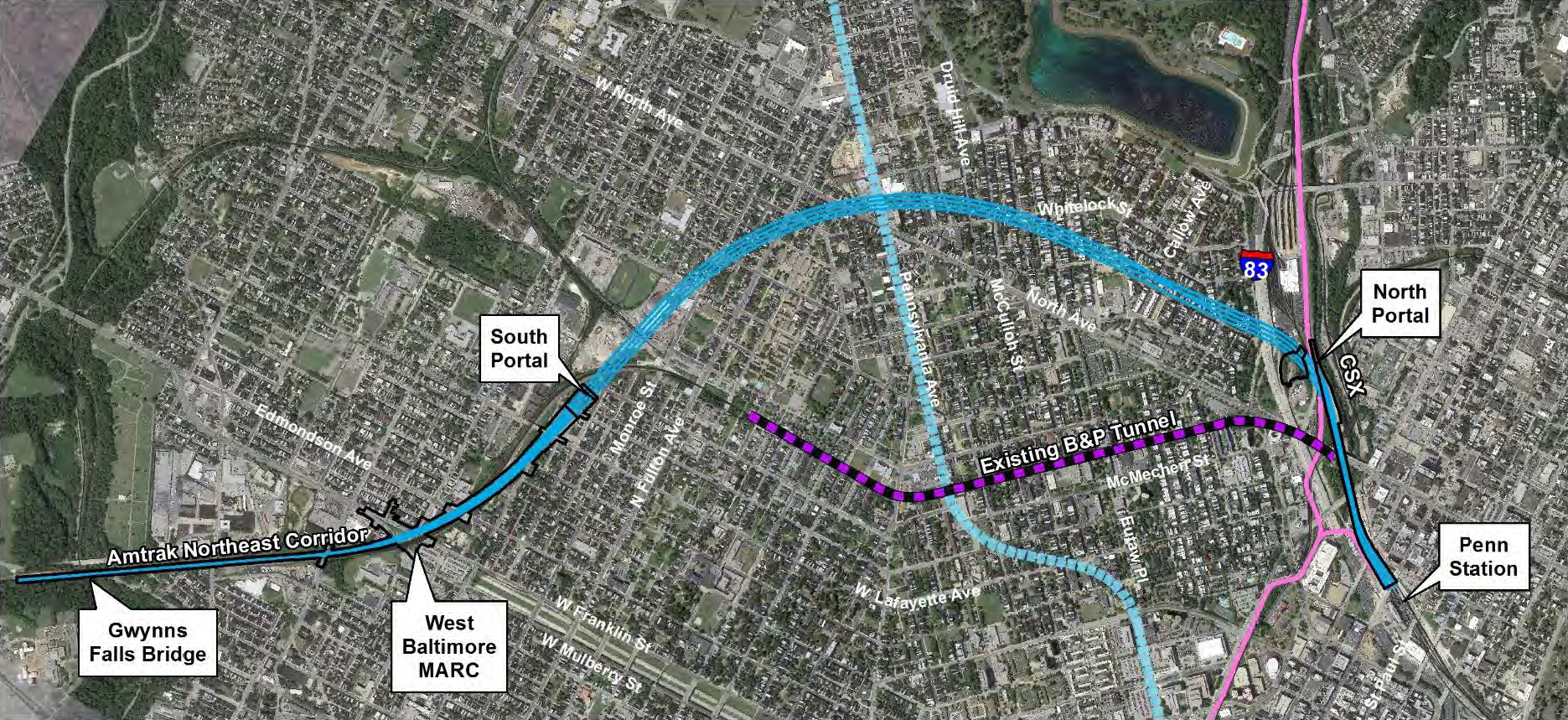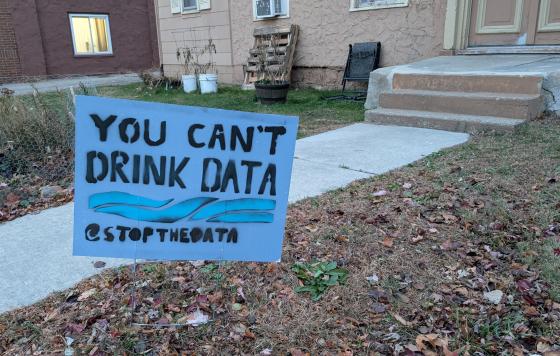
On Wednesday, the Baltimore City Council held an investigational hearing on the proposed B&P Tunnel expansion through West Baltimore. For the past few years, the Federal Railway Administration tasked Amtrak, MDOT, and Baltimore DOT with finding a solution to the constraints of the existing B&P Tunnel underneath West Baltimore: its narrowness and disrepair slow down and sometimes disrupt Amtrak and MARC passengers traveling betwen Baltimore and DC. But residents of the neighborhoods above the proposed new tunnel have been sounding the alarm, concerned that the proposal could concentrate air emissions, construction contamination, and even hazardous freight underneath their homes. Clean Water Action showed up to testify alongside RATT (Residents Against the Tunnels) before the City Council about air quality concerns related to the project - read our testimony below.
August 16, 2017
Dear members of the Land Use and Transportation Committee,
Hello. My name is Jennifer Kunze, and I’m the Maryland Program Organizer for Clean Water Action, a grassroots environmental nonprofit with over 8,000 members within Baltimore City. I'm here to express concerns about the B&P Tunnel expansion and its potential environmental, safety, and health impacts. Improved public transit and regional rail service are certainly important public goods, but these must be considered alongside the negative impacts of this project on communities in West Baltimore already facing significant barriers to racial, economic, and environmental justice.
Although this project is proposed as a means of improving passenger rail service, these improvements would also open up our section of the Northeast Corridor to freight. According to the Final Environmental Impact Statement, the current B&P tunnel is used by regional and Acela rail passenger trains, MARC trains, and only two local Norfolk Southern freight shipments per day, typically including vegetable oil, plastic pellets, paper, lumber, and produce. However, that is not typical of the North-East Corridor as a whole, of which the B&P Tunnel is a part. Norfolk Southern and CSX have rights to operate on the whole North-East Corridor under the Railroad Revitalization and Regulatory Reform Act of 1976, but according to the project’s Final Environmental Impact Statement, “While these agreements guarantee private rail freight companies access to the NEC, these rail freight companies have other route options around Baltimore that make the B&P Tunnel route less attractive as a major through route across or around the city.” But expanding the tunnel from two to four tracks and raising its height to accommodate double-stacked freight are exactly what could make the tunnel more attractive for through shipments of freight.
Regional planning documents name this as one motive for expanding the B&P Tunnel. Following the 2001 Howard Street Tunnel fire, the Federal Railway Administration commissioned comprehensive assessments of our city's rail capacity. The 2011 report, “Baltimore's Railway Network: Analysis and Recommendations,” states that “the conditions in the [existing] B&P Tunnel—as well as its criticality to the protection of a reliable passenger service—preclude its expanded use for most freight and constrain the flow of commerce to and through the Baltimore region.” In 2013, the North-East Corridor Infrastructure and Operations Advisory Commission developed a report on the need to enhance the Corridor as a high performance rail corridor for the whole region. The report identifies the existing B&P Tunnel as a “major capacity bottleneck for both passenger and freight trains,” and it identifies that one goal of redeveloping the B&P Tunnel is to “enhance freight access.” With this enhanced access and the trackage rights that Norfolk Southern and CSX already hold, shipments of all kinds of freight could begin with no process for public notification or input.
The most gripping concern related to freight is, of course, hazardous shipments. As you know, Clean Water Action has been concerned about shipments of extremely volatile crude oil through Baltimore since 2014, when a proposal emerged to build a new crude oil train terminal in Fairfield. By engaging in MDE's permitting process for this terminal, Baltimore residents were able to prevent that terminal from shipping crude oil, stopping a tremendous increase in crude oil train shipments traveling through South Baltimore and the rest of Maryland. But Baltimore would have no similar power to affect what travels through the B&P Tunnel. Local governments have no authority to regulate freight shipments through their jurisdiction, only the power to regulate terminals and other land uses. Once the tunnel's capacity is expanded and made attractive to freight shipments, Baltimore City would have no ability to regulate what hazardous freight is shipped through, including crude oil, chlorine gas, nuclear waste, and other hazards. We must be proactive about these risks at this stage of the process before it’s too late.
Even non-hazardous freight poses a threat to local air quality. Amtrak trains operate with electric locomotives, and MARC trains currently operate with electric-diesel hybrids, but MARC plans to transition its fleet to all-diesel locomotives. Diesel engines emit nitrogen oxides, particulate matter, and other pollution known to contribute to asthma, respiratory and cardiovascular illness, and premature death. The B&P Tunnel team conducted modeling of the anticipated air quality impacts of increased MARC train service in the B&P tunnel with the more-polluting diesel locomotives, and found that changes in MARC train service will cause a net increase in carbon monoxide, nitrogen dioxide, volatile organic compounds, and particulate matter pollution in the neighborhoods surrounding the B&P tunnel route, but that this increase would not surpass federal air quality thresholds. However, freight rail shipments also operate on all-diesel locomotives, so an increase in freight train shipments through the tunnel would cause an increase in diesel emissions in the surrounding areas. The projected air pollution models assumed that in 2040, only two freight trains per day would travel through the tunnel, and did not account for the impacts of any increased freight. This is a significant oversight and we urge the Council to carefully consider the potential impact of various scenarios for increased freight shipments through the B&P Tunnel on air quality – not only for the communities immediately surrounding the proposed B&P Tunnel route, but also on the communities of East and Southwest Baltimore along the Northeast Corridor that would also receive the air quality impacts of freight shipments through that corridor.
We also must pay particular attention to where these air quality and public safety impacts would occur: in low-income and minority communities in East, West, and Southwest Baltimore that have suffered the impacts of redlining, other racially-based housing policies, industrial pollution, highway construction, and other cumulative impacts. According to the Baltimore Neighborhood Indicators Alliance, residents of the neighborhoods nearest the proposed B&P Tunnel route have a life expectancy as much as 15 years shorter than residents of the city's wealthier neighborhoods. It’s incumbent on Baltimore City to do due diligence to ensure this project does not add to the historic and ongoing racial, housing, economic, and environmental injustices faced by the affected neighborhoods. We urge the Council to continue taking community input and carefully consider the environmental and human health impacts of this project. Thank you.


